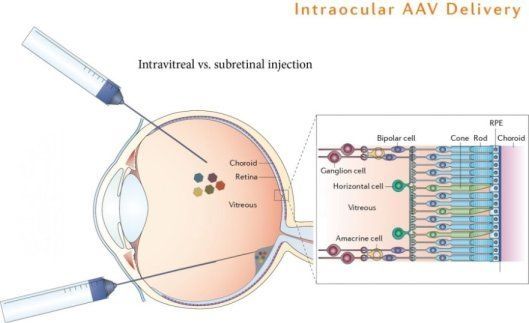Page 8707
Mar 21, 2019
VA to Offer New Ketamine-Based Nasal Spray for Depression
Posted by James Christian Smith in categories: biotech/medical, health, neuroscience
The newest FDA-approved medication to treat severe depression, a nasal spray based on the anesthetic (and misused hallucinogenic party drug) ketamine, will soon be available to veterans treated within the Department of Veterans Affairs.
In a move that may help thousands of former service members with depression that has not improved with other treatments, VA officials announced Tuesday that the department’s doctors are now authorized to prescribe Spravato, the brand name for esketamine, a molecular variation of ketamine.
The decision to offer a drug hailed by many as a breakthrough in treatment for its speedy results — often relieving symptoms in hours and days, not weeks — shows the VA’s “commitment to seek new ways to provide the best health care available for our nation’s veterans,” Secretary Robert Wilkie said in a release.
Continue reading “VA to Offer New Ketamine-Based Nasal Spray for Depression” »
Mar 21, 2019
Scientists Reveal Ancient Social Networks Using AI—and X-Rays
Posted by Genevieve Klien in category: robotics/AI
Historians are using data science to unearth overlooked female power brokers, imperial influencers, and other figures hidden in ancient texts.
Mar 21, 2019
Blue Origin studying repurposing of New Glenn upper stages
Posted by Genevieve Klien in categories: government, habitats, space travel
SILVER SPRING, Md. — Blue Origin has studied repurposing upper stages of its future New Glenn launch vehicle to serve as habitats or for other applications as part of a series of NASA-funded commercialization studies.
Brett Alexander, vice president of government sales and strategy at Blue Origin, said the company looked at ways it could make use of the second stage of New Glenn rather than simply deorbiting the stage at the end of each launch, but emphasized the company currently had no firm plans to reuse those stages at this time.
That study was part of a series of study contracts awarded by NASA last August to study future concepts to support commercial human spaceflight in low Earth orbit. “We focused there on the reuse of the second stage of New Glenn and what we might be able to do with that volume and capacity once we’re on orbit,” he said during a panel discussion about low Earth orbit commercialization at the American Astronautical Society’s Goddard Memorial Symposium here March 20.
Continue reading “Blue Origin studying repurposing of New Glenn upper stages” »
Mar 21, 2019
With Launch Of New CRISPR Company, Competition Extends To Diagnostics
Posted by Genevieve Klien in categories: bioengineering, biotech/medical, space
The gene editing technology CRISPR, which has spawned several startups aiming to use the tool to develop new therapies, is now the inspiration for a new company in a less-crowded space: diagnostic testing.
Sherlock Biosciences is launching in Cambridge, Massachusetts, with $35 million in funding. That includes $17.5 million in the form of a non-dilutive grant from the Open Philanthropy Project, an organization primarily funded by Dustin Moskovitz, the billionaire cofounder of Facebook and Asana, and his spouse, Cari Tuna. The Open Philanthropy Project is also making a separate investment in Sherlock, along with other undisclosed investors. CEO Rahul Dhanda says he’s still raising more funding for the company’s Series A.
One of Sherlock Biosciences’ key technologies comes from the Broad Institute lab of Feng Zhang, who did some of the early work elucidating the DNA-modifying potential of CRISPR and its associated enzymes after their discovery in bacteria.
Continue reading “With Launch Of New CRISPR Company, Competition Extends To Diagnostics” »
Mar 21, 2019
New technique could help regrow tissue lost to periodontal disease
Posted by Genevieve Klien in categories: biotech/medical, neuroscience
According to the U.S. Centers for Disease Control and Prevention, about half of all Americans will have periodontal disease at some point in their lives. Characterized by inflamed gums and bone loss around teeth, the condition can cause bad breath, toothache, tender gums and, in severe cases, tooth loss. Now, in ACS Nano, researchers report development of a membrane that helps periodontal tissue regenerate when implanted into the gums of rats.
To regrow lost gum tissue and bone, scientists have tried implanting pieces of polymers that form a protected niche near the root of a tooth, recruiting nearby stem cells and helping them differentiate into new gum and bone cells. However, a second surgery is usually required to remove the polymeric membrane, which can get in the way of the healing process. Although researchers have developed biodegradable membranes, these materials don’t tend to work as well for re-growing periodontal tissue. Alireza Moshaverinia, Paul Weiss and colleagues wanted to develop a membrane that would enhance periodontal tissue regeneration and then be absorbed by the body when healing was complete.
The researchers made nanofibrous membranes of poly(ε-caprolactone), a biocompatible polymer already approved for medical applications. They then coated the membrane with polydopamine (PDA), a synthetic polymer that mimics the sticky protein that mussels use to attach to wet surfaces. In the lab, dental-derived stem cells adhered to the membrane and differentiated. The PDA coating also attracted calcium and phosphate ions, leading to early bone mineralization. When the researchers implanted the membranes into the gums of rats with periodontal defects, bone at the defect sites regenerated to normal levels within eight weeks. By this time, the membranes had degraded and were absorbed by the rats.
Mar 21, 2019
Sounds and vibrations are quite similar for the brain, finds new study
Posted by Xavier Rosseel in categories: biotech/medical, mobile phones, neuroscience
We all know the feeling of a mobile phone vibrating in our hands when announcing an incoming call. If we perceive these vibrations so clearly, it is due to specialized receptors that transduce them into neural signals sent to our brain. But how does the latter encode their physical characteristics? To understand this, neuroscientists from the University of Geneva (UNIGE) have observed what happens in the brains of mice whose forepaws perceive vibrations. They discovered that neurons in the somatosensory cortex are activated in a manner similar to those in the sound-reactive auditory cortex. These results, published in the journal Nature, suggest that feeling a phone vibrate or hearing it ring is ultimately based on the same brain codes.
If you place a glass of water on your desk, you can probably see on its surface the concentric oscillatory motions created by the small movements that occur nearby. These oscillations are caused by vibrations that propagate through the floor, desk, glass and all other solid surfaces. These vibrations are also important sensory stimuli that we use to detect, for example, an approaching train or to identify the familiar step of our office neighbor. «We live surrounded by vibrations that are extremely important in how we perceive the world,» explains Daniel Huber at the Department of Basic Neurosciences at the UNIGE Faculty of Medicine, who led this work. «So we wanted to know how the brain perceives and represents them.».
Mar 21, 2019
With single gene insertion, blind mice regain sight
Posted by Shailesh Prasad in category: biotech/medical
People left blind by retinal degeneration have one option: electronic eye implants. Neuroscientists have now developed an alternative: gene therapy that, in tests, restored vision in blind mice. A gene for green opsin delivered via virus gave blind mice enough sight to discern patterns on an iPad at a resolution sufficient for humans to read. Given existing AAV eye therapies already approved, this new therapy could be ready for clinical trials in three years.
Mar 21, 2019
Beyond Metformin For Aging — Jahahreeh Finley — IdeaXme — Ira Pastor
Posted by Ira S. Pastor in categories: aging, bioengineering, biotech/medical, cryonics, futurism, genetics, health, life extension, neuroscience, science

Tags: aging, AI, AMPK, Artificial Intelligence, bioquark, biotech, health, healthspan, immortality, ira pastor, life, lifespan, longevity, metformin, mTOR, patents, rapamycin, wellness
Mar 21, 2019
Without Humans, A.I. Can Wreak Havoc
Posted by Derick Lee in categories: government, robotics/AI
As the World Wide Web marks its 30th birthday on Tuesday, public discourse is dominated by alarm about Big Tech, data privacy and viral disinformation. Tech executives have been called to testify before Congress, a popular campaign dissuaded Amazon from opening a second headquarters in New York and the United Kingdom is going after social media companies that it calls “digital gangsters.” Implicit in this tech-lash is nostalgia for a more innocent online era.
Let’s not let artificial intelligence put society on autopilot.
















